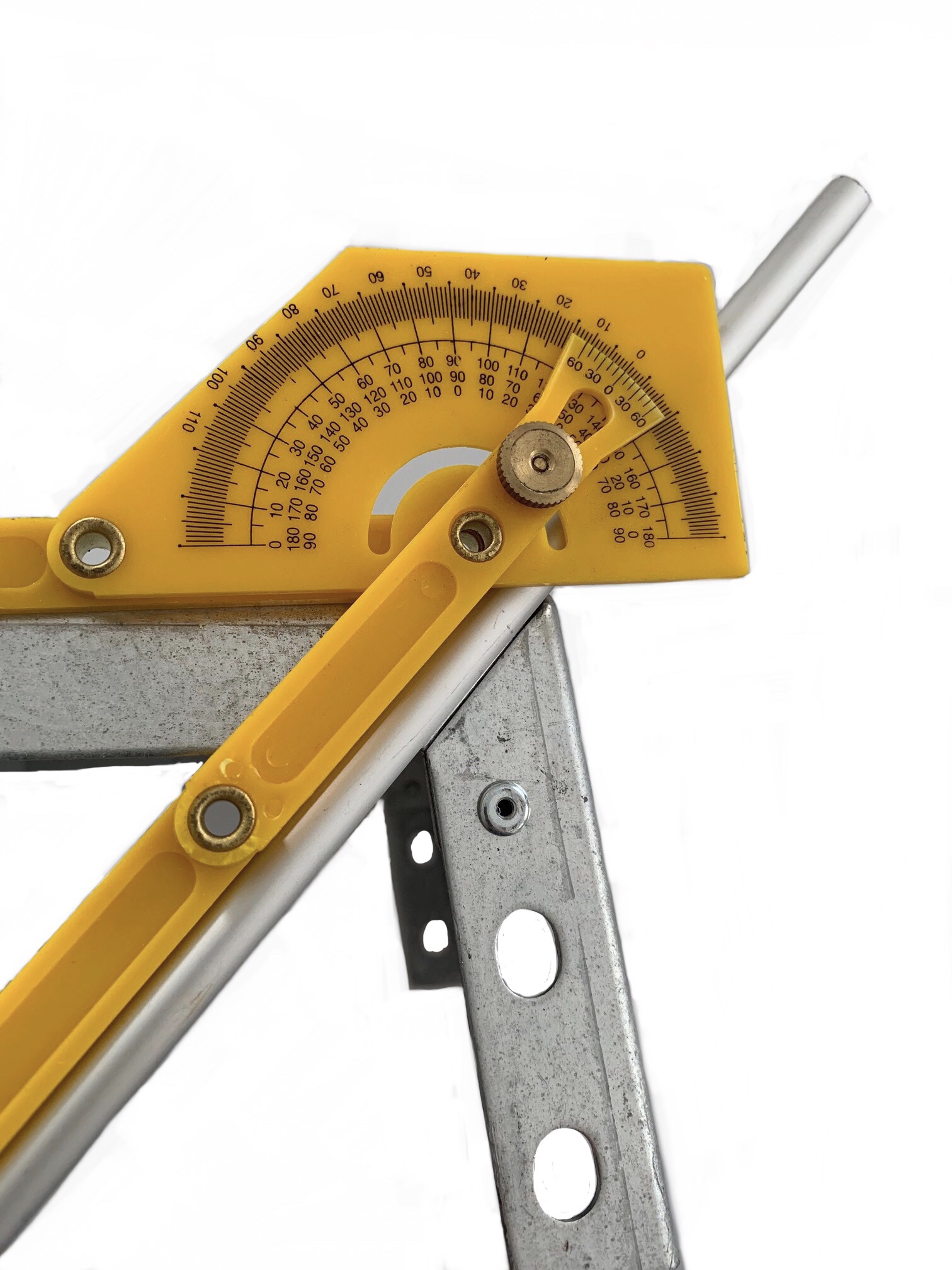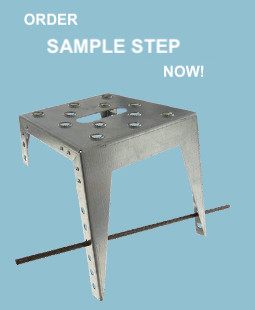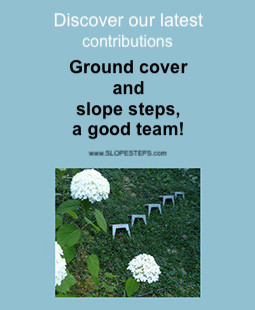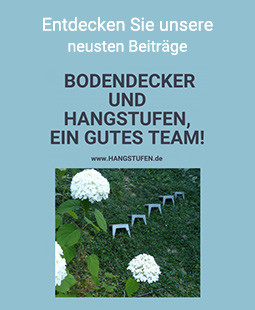The following questions will guide you to the right product for you:
1. Material + Surface
Would you rather have steps that will stay silver (galvanized steel, aluminum or stainless steel) or steps that will rust (raw steel) and blend into the terrain visually?
It is also possible to have the steps in "galvanised steel" and "aluminium checker plate" (and also the railing) individually coated according to the RAL colour chart. This means that the steps can be designed to suit your personal taste. Click here for more information.
If you wish to paint the steps yourself in the "galvanised steel" version, please refer to the FAQ page!
2. Recessed grip
Should the steps have a recessed grip (easy to grip from above) or not (steps must then be taken sideways to the right and left)? If you want to move the steps frequently, then the recessed grip makes sense.
On the item page (to the right of the product images) you have the option of selecting or deselecting the recessed grip.
3. Surefootedness
If sure-footedness is the most important issue, then you should choose steps with punched serrated holes. These offer the highest slip resistance.
++++
Steel/stainless steel step, with punched serrated holes
+++
Steel/stainless steel step, with anti-slip foil
++
Aluminium step, ribbed
+
Step steel/stainless steel, smooth
Take a look at the videos in the "Slide test" section!


4. Steepness of the terrain
The step type "Mini" is suitable for steep slopes, "Midi" for medium and "Maxi" for less steep slopes.
As a rule, the steps can be used up to the following slopes:
Type "Mini" (step-deep 200 mm) - up to 45°
Type "Midi" (step-deep 250 mm) - up to 40°
Type "Maxi" (step-deep 300 mm) - up to 35°
On the page of rechneronline.de (german language) you can calculate slope and gradient! There you can enter your personal data such as length, altitude and total distance, at the push of a button you will get an indication of the gradient in degrees (°) and percent (%).


The step shown here is the "Mini" type!
For even steeper terrain, you can consider the extension bar.
5. Stepsize
This question is difficult to answer from a distance and depends on the personal situation in the terrain as well as on the personal feeling of the user. In practice, however, a medium step size (type "Midi" and 365 mm wide) has proven to be a mixture between sufficient step comfort and practical size.
Series "MINI", step-deep 200 mm
possible step widths 200, 290 or 380 mm
Series "MIDI", step-deep 250 mm
possible step widths 250, 365 or 480 mm
Series "MAXI", step-deep 300 mm
possible step widths 300, 440 or 580 mm
Size compared to step depth (see above):
Shoe size 38 (german), foot length approx 240 mm (Shoe length correspondingly longer)
Shoe size 41 (german), foot length approx 260 mm (Shoe length correspondingly longer)
Shoe size 44 (german), foot length approx 280 mm (Shoe length correspondingly longer)
Original size of the steps - to print out and test:
Download the following pdf file and print out the 6 pages. You can then then place them on the floor and test exactly which step size is right for you.
On the item page (to the right of the product images) you have the option of selecting the available step sizes.
6. How many slope steps do I need for my slope?
A "good, comfortable" walking is possible with a distance of 5 cm between the steps. On the homepage above (above the 3 videos) you will find a quantity calculator. Enter the slope length and select the step type, then you have an orientation how many steps you need.
Of course, this is also a bit of a "matter of taste". Someone who only very rarely has to use the stairs may say to himself, fewer steps with more spacing are enough for me.
7. Weight
If you have a lot of steps and want to move them often, weight can be an important issue.
Alu step > light (e.g.: smallest step size 1.1 kg)
Steel step > heavy (e.g.: smallest step size 1.6 kg)
8. Underground
In which subsoil should the steps be placed?
+ +
Soil
- +
Forest soil
- -
Stone soil
9. Accessories
The knee pads are practical if you want to kneel on the steps when weeding, for example.
In particularly steep positions it may be helpful or necessary to extend the long front feet. The steps can then also be used in very difficult and steep positions. Click here for the extension bar.
With the railing you have the possibility to mount a railing next to the steps even in sloping terrain. It is very easy.
10. If you want it to go a little faster ....
Filter options to help you make the right choice can also be found here (on the left) and at the top of the search box!
You can also add products from the overview to a comparison list. If you move the mouse over a product in the category overview, simply click on the double arrow and an item will be added to the list. Click here to go to the product comparison list!
If you are unsure, we can offer you a sample step at a greatly reduced price, click here.




